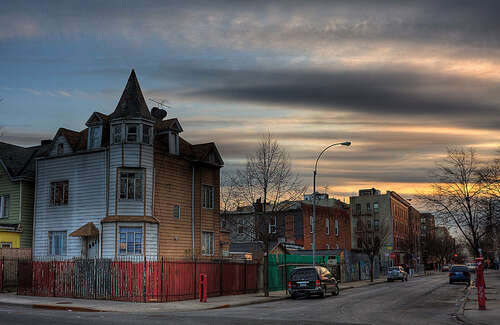
A recent study by Chamber of Commerce analysing housing costs and median household income in more than nine million households across the US has revealed the top cities with the most homeowners struggling to afford their homes. Termed ‘house poor’ these homeowners spend more than 30% of their income on housing costs, leaving little room for other essential expenses.

The study also identified cities with budget-minded homeowners who manage to keep their housing expenses below 20% of their income.
Top cities with ‘house poor’ homeowners
According to the US Census Bureau’s American Community Survey, which was used for the study, after Hialeah, Florida, the top three cities with the highest number of house-poor homeowners are Los Angeles, New York City and Miami. These cities have a strikingly high percentage of homeowners spending more than 30% of their household income on housing costs. In Miami, over 44.6% of homeowners are considered to be house poor, beaten closely by 48.7% in Los Angeles and 45.3% in New York City.
“The high cost of living in these cities can lead to increased financial stress among residents, which may have negative effects on their mental and physical well-being. Additionally, factors such as limited housing supply, high demand, and local economic conditions contribute to the high percentage of cost-burdened homeowners,” Chamber of Commerce’s Rob Lora told City Monitor.
The study found that cities in Florida and California dominate the list of the top 30 cities with the highest number of house-poor homeowners. Out of the top 30, six are in Florida and 14 in California. In fact, Lora adds, "It's interesting to note that, except for New York City and Honolulu, the top ten cities in the US for cost-burdened homeowners are all located in either California or Florida."
This trend highlights the challenges faced by homeowners in these states due to higher housing costs and other economic factors.
National average of 'house poor' homeowners
Nationwide, nearly three in ten homeowners (27.4%) with a mortgage are considered house poor. This indicates a significant financial burden experienced by a considerable portion of American homeowners who struggle to keep up with housing expenses. Furthermore, a notable 21% of cost-burdened homeowners have a household income of less than $75,000, illustrating the impact of income disparities on housing affordability.
On the other end of the spectrum, the study also identified cities with the most budget-minded homeowners. These are homeowners who manage to keep their housing costs below 20% of their household income, going above and beyond the commonly recommended 30% rule. Notably, nearly two-thirds of homeowners in Huntsville, Alabama, and close to 60% in Raleigh, North Carolina, are classified as budget-minded homeowners.
"Cities with budget-minded homeowners tend to have more affordable housing costs. Some common characteristics among these cities may include lower housing costs, higher median household incomes, and more affordable living expenses. These cities may also have a more balanced housing market, with a sufficient supply of affordable housing options to meet the demand, contributing to their residents' ability to manage their housing costs effectively," Lora says.
Financial planning crucial
While the 30% rule serves as a guideline for setting aside income for housing costs, Chamber of Commerce suggests that prospective homeowners are advised to consult with financial advisers to ensure they can afford their mortgages and other related expenses. Unexpected costs, such as high-interest rates, property taxes, and second mortgages, can quickly push homeowners into the house-poor category.
[Read more: Income in US cities is most unevenly distributed in a decade]






